FORT HUACHUCA, Ariz. -- A former commander of "H" Company, 368th Infantry Regiment (Colored), 93rd Infantry Division visited here April 27. He is one of the few remaining men who were part of a Buffalo Soldier unit assigned here.
Retired Col. Lee James, 96, came to Fort Huachuca for two reasons. One was to visit his granddaughter before she and her military husband moved to another assignment. The second was to see an exhibit at the Fort Huachuca Museum which displayed the 30-caliber, M1 carbine he carried in Burma, China and India in 1945.
<h2>James shares his background</h2>
On March 1, 1941, the 368th Infantry Regiment formed at Fort Huachuca.
James, who started his army career with two years of compulsory basic military training while pursuing an animal husbandry degree at Texas A & M, was commissioned a reserve infantry 2nd Lieutenant in 1936. The following years included reserve duty and promotion to 1st Lieutenant, until he was ordered to Fort Sam Houston, Texas, from home at College Station, Texas prior to reporting for duty with the 368th Infantry at Fort Huachuca, March 9, 1941.
Initially, the soldier served as second in command and platoon leader, Company H. He was also the battalion athletic officer.
When asked if the unit fielded any strong teams in football or baseball, he said, "No, I was not that kind of athletic officer. I led the soldiers in calisthenics," he said with a wry smile, adding the fort did have good baseball teams that competed against teams in Naco and Nogales.
James initially lived with his wife in Douglas at the home of a distant relative and commuted to Fort Huachuca on a daily basis along with a few other officers. The couple later moved to Warren, which required shorter commuting time.
When he wasn\'t on duty, James spent his nights at home, or would go home on weekends.
<h2>Dec. 7, 1941 brought change</h2>
James' orders were for one year of active duty, but that changed on Dec. 7, 1941, after the bombing of Pearl Harbor.
"On that particular day, we were playing basketball behind the BOQ [bachelor officers' quarters] on a playing field down behind the water tower ... across from what in later years would be called 'Splinterville.' ... I was in my 30s," James said.
The war extended James' orders. From late December 1941 to July 1942, James and the soldiers of Company H were assigned to Western Defense Command, Camp Sibert, Nev. (Boulder City) guarding Boulder Dam from attack or sabotage. During this period, he was promoted to captain and given company command.
When the assignment ended, the soldiers returned to Fort Huachuca.
<h2>James describes his command</h2>
James, who is Caucasian, commanded Company H, 368th Infantry regiment, 93rd Infantry Division from mid-1942 to mid-1943, when he was accepted into airborne school and left Fort Huachuca. He explained commanding an all-black unit was no different than commanding any other group of soldiers.
"I didn't find any [challenges]," James said, adding some people were biased which could have led to problems, but he didn't have any.
"There are certain challenges you find with people you work with, and in the general population," he said, noting there were no unique problems for either white or black soldiers.
"I hope I was selected [for command] because of expressed and shown leadership and cooperation in which I performed my service, how I related to my comrades in arms, and my like for challenge," James explained, adding while he commanded white soldiers during his two-week annual reserve training, he had never commanded black soldiers.
"I really enjoyed them and got to know them quite well," he said, explaining how supplies would arrive piecemeal, and when something new came in, he would stand at the supply counter.
"Each time I was at the counter with my supply sergeant, I watched my soldiers come in so I could learn their names. I got to know about 188 of them by name, and some of their personality traits.
During field maneuvers, James would sometimes carry a drop arm for a 30-caliber machine gun tripod so soldiers assigned to tote it could get an occasional break. Learning the soldiers' names and personalities, and helping out when in the field, were possible reasons the commander did not have problems commanding an all-black unit.
"We did start to get [black officers] in 1942, four or five were assigned here ... four or five second lieutenants. We had one captain, and he was a chaplain," James said, sharing an anecdote.
"He had a unique way of talking to the assembly of black troops.
"He said while you are here, you have three homes.
"You left one. You have one home down in this area where you are barracked, and up on the post, there's a guardhouse, and that's your third home.
"If you do the things that are right, you'll be in the barracks," James said.
<h2>Commander describes enlisted soldiers</h2>
When asked about enlisted men he remembered, James mentioned several.
"The Army is just like yeast in the way it grows. The 10th regiment was a black regiment for the Civil War, stationed at Fort Davis.
"The 10th became the 24th, became the 25th, and [they] gave us cadre for the 368th, a supply sergeant, a mess sergeant, platoon sergeants," James explained, describing several.
"Sergeant Walker, the mess sergeant, great guy. He could cook equally well in the barracks or out in the field."
"Sergeant Driver had been on the B&O Train Service ... If we put a Soldier on leave, he [Driver] knew the train routes and train times, and if [the soldier] went AWOL (away without official leave), Driver would say he could have caught a train at a certain location," adding Driver could even give the arrival time.
"Sergeant Hamm was a good soldier but had problems drinking," James said, and explained how Ham would earn a few stripes, get in trouble from drinking, would lose his stripes and repeat the process.
"He knew his employment, he knew his tactics, and he knew his doctrine. He just could not stay away from alcohol," James continued.
<h2>Commander names favorite officers</h2>
James also named two officer favorites.
"Our Colonel, Carl F. McKinney, was one of the great, great commanders. He understood soldiers; he understood his troops; he understood young ones, draftees, or second lieutenants. He was able to handle them all. And so, he was one of the best," James explained.
He also talked about his battalion commander, Col. Willard Smith, with whom he formed a lasting friendship. The two visited throughout the years once they left Fort Huachuca.
<h2>Soldiers train on Fort Huachuca</h2>
James described that while his soldiers did not train along the San Pedro River, they did have convoy training and road marches, some of which were 16 miles long. The mess personnel also had to get food to the field. He explained how on one assignment where his unit had to return by train, mess soldiers turned a box car into a kitchen and fed the soldiers, one group at a time.
<h2>James explains what Fry was like</h2>
"I've seen a lot of changes [during different visits over the years]," James said. He described the Fry area outside the main gate at the time he was stationed here as a small cluster of five or six assorted businesses including service for beer and 20 to 25 scattered adobe structures.
When asked about an infamous area, "The Hook," James said, "That's what it was [prostitute area]. If soldiers went out there, they could get in trouble.
"They kept the guard on duty at the gate busy, and he took some to the guardhouse," he said.
<h2>James describes Huachuca assignment</h2>
When asked what he liked best about his assignment here, James said, "I liked the camaraderie of the officers and their wives, I liked the area for its scenic nature, and I liked seeing [soldiers] grow from a draftee into [soldiers who] could be efficient, timely and perform functions automatically.
'Retraining' is what James liked the least. "Retraining, over and over and over again - same troops. I liked getting out in the field, more variety," he explained. He disliked continuous repetitive training of those who could catch on quickly.
<h2>Life off-duty</h2>
During off-duty times, the soldiers played poker and cards. He remembers one soldier with a good voice, who sang, "arias which filled the barracks." The men had fun playing volleyball or getting in somebody's car to go have a beer.
When their wives were around, the officers enjoyed sightseeing in Tombstone, Tucson or Nogales.
James also talked about Mar Kim's Chinese/American Restaurant on Fort Huachuca.
"When the ladies came out and joined us, that's where we'd go - Mar Kim's. I can nearly see the tables, the wine bottles with the protection on the outside, and wax that's dripped on them for ages; everybody saved one of those bottles when they could.
"When the payroll didn't come in, Mar Kim paid the troops [himself], and he got the contract [for the restaurant].
When asked about his favorite meal, James said he varied them "between spaghetti and meatballs and veal parmesan."
<h2>Fort Huachuca grows</h2>
James described Fort Huachuca's rapid growth after the start of World War II.
"We left here in January to go to the Boulder Dam. We got back in July. When we left, we had the hospital and two regiments. When we got back, it [Fort Huachuca] was covered with barracks.
"We had the potential for another regiment, and they had finished the Officer's Club. I did go there a few times, but since we had the [368th Officers] Association reunions, have been back on several occasions and have eaten in the club," James explained, then described a memorable incident that took place at the club after he returned from assignment at Boulder Dam, now known as Hoover Dam.
"When we went to Hoover Dam, we got jeeps. And so, when we returned here, I thought 'let's float the jeep across that lake [by the now-demolished Officer's Club]. ... So, as a company commander, I got my driver and one that had a winch on his vehicle. We put all the necessary things under the jeep and around it, gave the signal from across the way for the driver to start the winch, and it [vehicle] slowly went in the lake.
"By the time it went in midway, it was under water. What was the problem' We didn't balance it, and the front-end with the engine was heavier than the back end.
"Glover kept that winch going. First thing, here come the waves back. Then out it [the jeep] came," James said with a hearty laugh.
<h2>Life after Fort Huachuca</h2>
After a few more military assignments, James took a two-year break in service, and then returned to the military. He retired from the Army in 1966, and became Assistant Regional Director of Texas Rehabilitation Commission.
Now retired once more, he and his third wife Betty James currently reside in Mesquite, Texas.

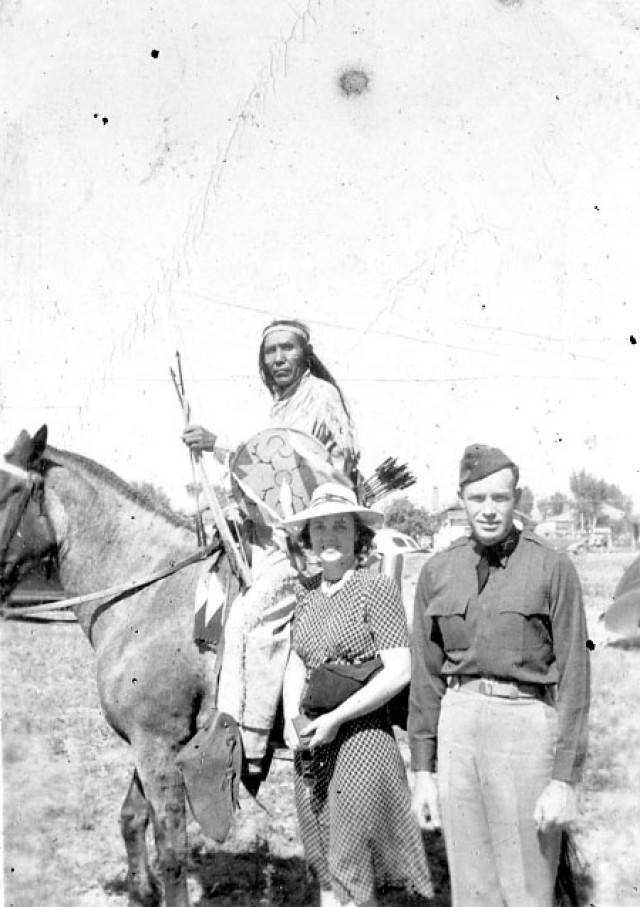

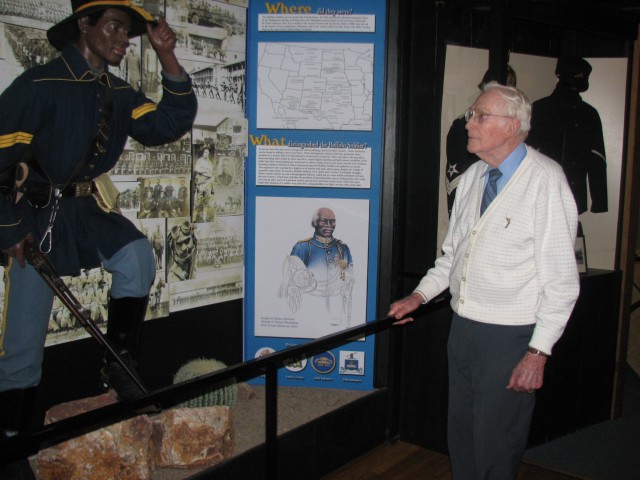
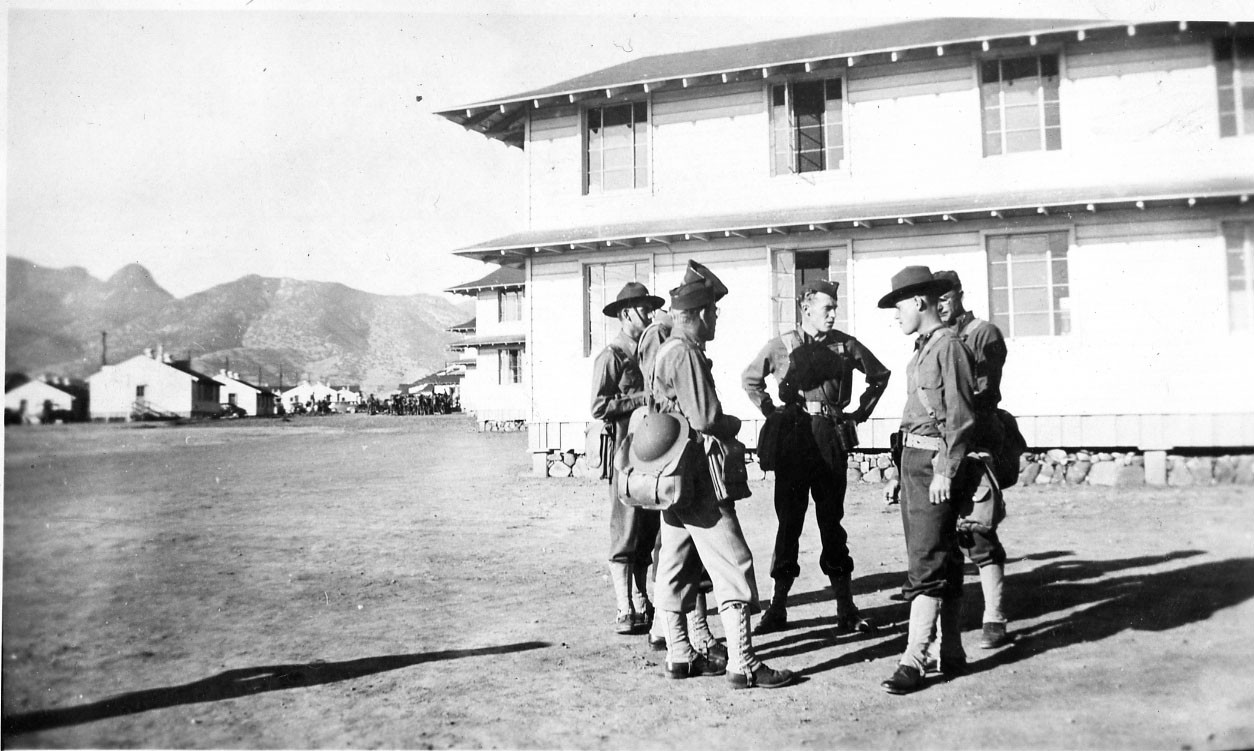
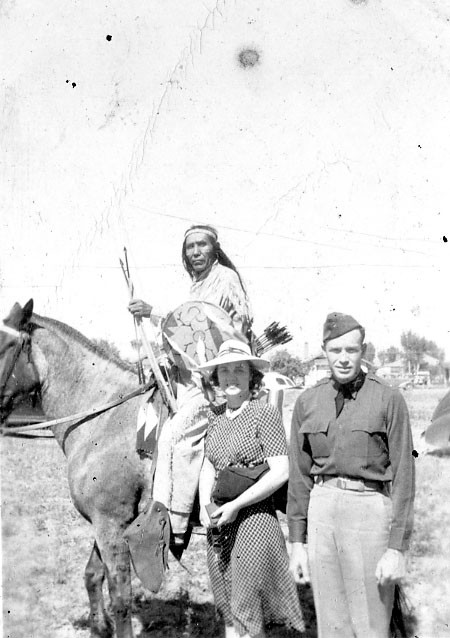
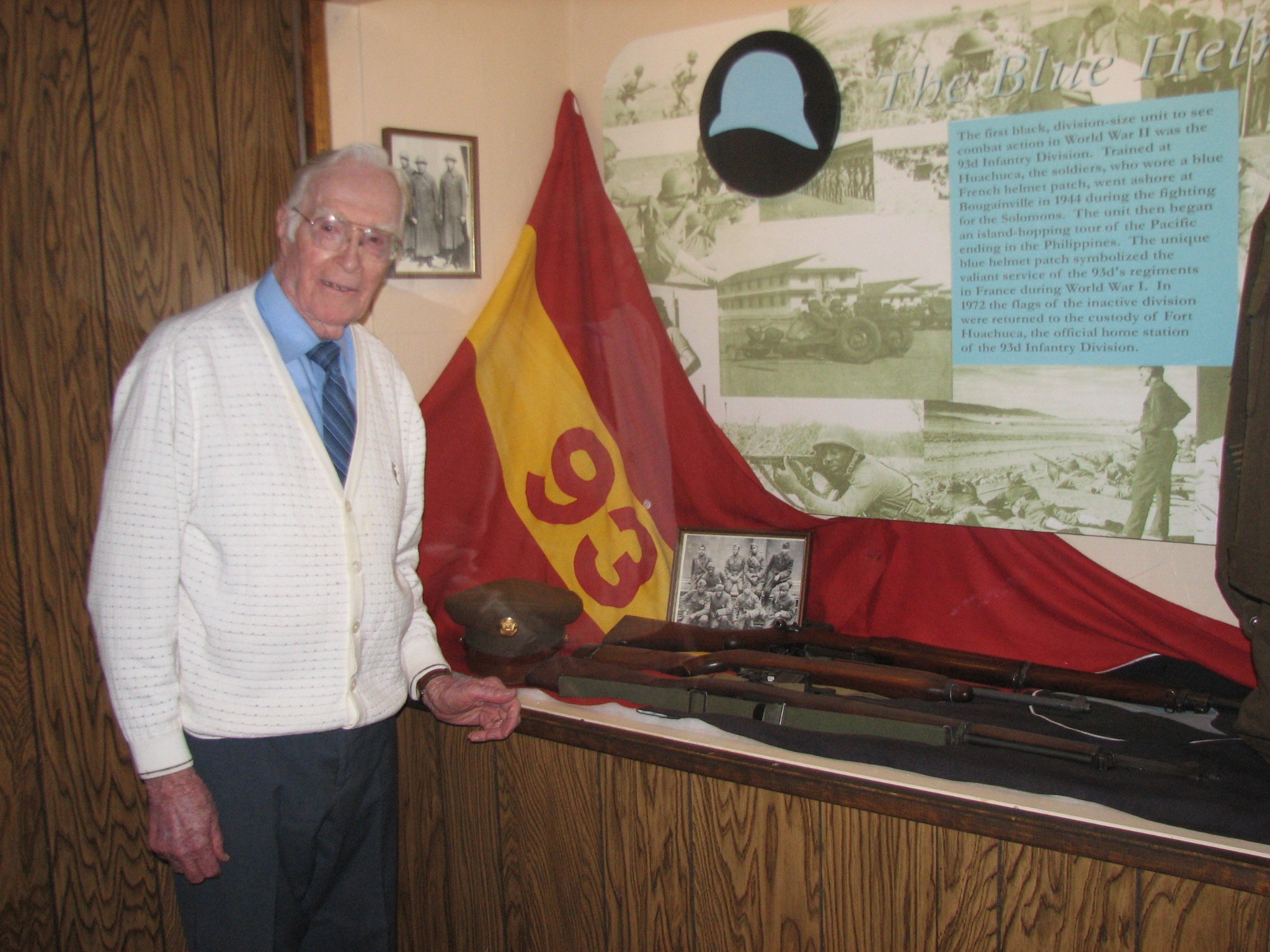
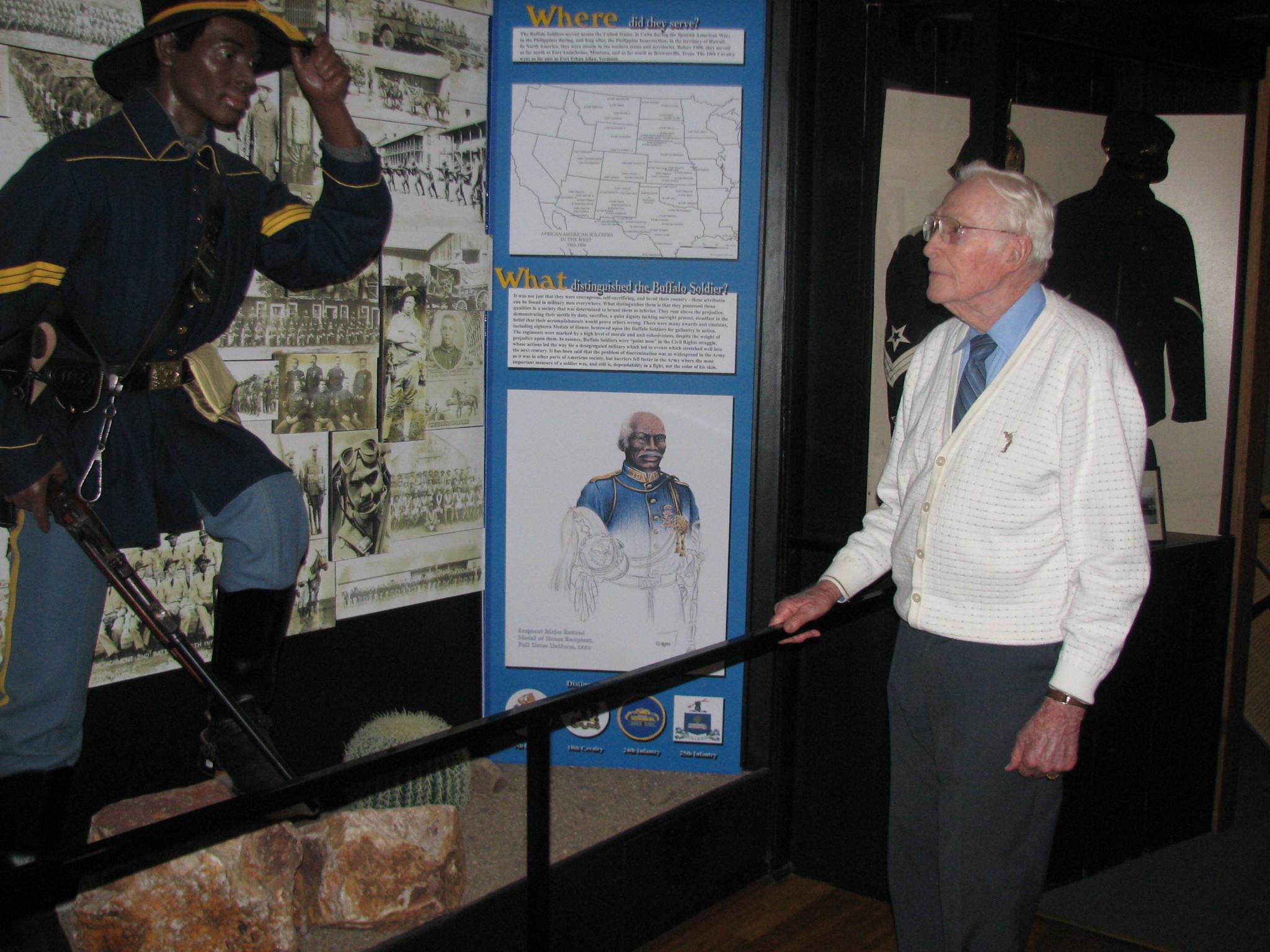
Social Sharing